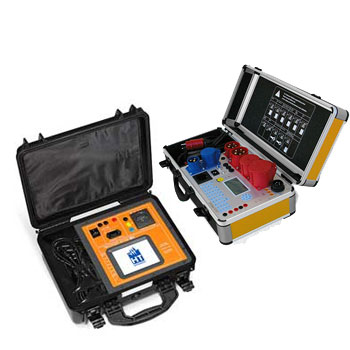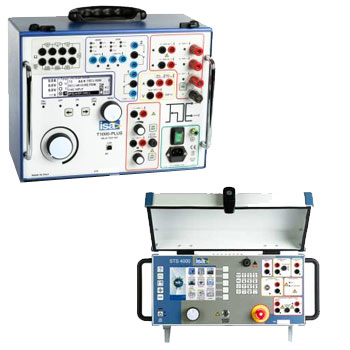
Temperature Calibrators – reliable references for lab & field
Temperature calibrators enable the traceable testing and adjustment of RTD and thermocouple sensors, measurement chains and indicators—from field use with dry-well calibrators to high-precision calibration in the lab (liquid baths, blackbodies, furnaces).
Available device classes: dry-well calibrators (block, multi-hole inserts), liquid baths/micro-baths, surface calibrators, blackbodies (IR), high-temperature furnaces and reference thermometers incl. SPRT & precision Pt100.
ICS Schneider Messtechnik supports instrument selection, uncertainty budgeting, ISO/DAkkS calibrations, documentation and automation (PLC/PC/IIoT).
FAQ on Temperature Calibrators
Answers on device types, specifications (stability/homogeneity), immersion depth, IR/surface, uncertainties, calibration points and standards.
What is a temperature calibrator used for?
For comparison or fixed-point calibration of sensors/indicators at defined temperatures—using a traceable reference sensor and documented conditions.
Which device types exist?
| Type | Range (typ.) | Strengths | Use |
|---|---|---|---|
| Dry-well calibrator | −35…+650 °C | fast, mobile, clean | field/service |
| Liquid bath/micro-bath | −80…+300 °C | best homogeneity | lab/QA |
| Blackbody (IR) | −20…+1 000 °C | IR reference | IR thermometers |
| Surface calibrator | 0…+450 °C | flat reference surface | surface probes |
| High-temperature furnace | to >1 200 °C | TC calibration | metals/process |
Dry-well or liquid bath—what should I choose?
Dry-well: mobile, fast ramps; small gradients → good practical accuracy. Bath: maximum homogeneity/stability, ideal for high accuracy and unusual probe geometries.
What do stability, homogeneity and accuracy mean?
- Stability: temporal fluctuation at the setpoint (e.g., ±0.02 K).
- Homogeneity/gradient: spatial differences within the medium/block.
- Accuracy: deviation from the true value incl. reference & calibrator.
How do I select calibration points?
Application-oriented: e.g., low/mid/high of the operating range, plus ice/0 °C if relevant. For indicators: distribute points across the scale.
Which sensors can be tested?
RTD (Pt100/Pt1000), thermocouples (Types K/J/T/N/E/R/S/B), thermistors, and IR thermometers (with blackbody). Multi-channel models allow parallel tests.
How deep should I immerse?
Rule of thumb: at least 15–20× the probe diameter or until the sensing point is fully within the homogeneous zone. Keep distance to bore bottom/block edge.
Which inserts/bores are suitable?
Matched bore (clearance 0.2–0.5 mm) for good heat transfer; multi-hole inserts for series tests; blind inserts with reference channel for a stable reference position.
How does load (number/size of probes) affect results?
Many/large probes increase axial/radial gradients and prolong stabilization time. Reduce load or use a bath if necessary.
Thermocouple specifics?
Observe cold junction compensation, ensure uniform temperature at connections, run TC wires to the instrument (avoid dissimilar metals).
Notes on surface calibration
Planarity, contact force, thermal paste, and shielding against convection are crucial. Ensure the probe tip fully contacts the plate.
IR calibration with a blackbody
Set the blackbody and device emissivity (ε), observe D:S and focus, shield ambient reflections; use a reference RTD for verification.
How do I build an uncertainty budget?
- Reference sensor (calibration certificate)
- Calibrator: stability/gradient/display
- Hysteresis/drift of DUT
- Repeatability & resolution
- Effects of immersion/coupling/ambient
Automation & documentation
Instruments with interfaces (USB/RS-485/Modbus/Ethernet) support automated sequences, stability criteria, pass/fail, and audit-ready reports (PDF/CSV).
Factory ISO vs. DAkkS/ISO 17025
Factory calibration: practical and cost-efficient. DAkkS/17025: accredited methods with stated measurement uncertainty & traceability—often required for audits/GMP.
Which liquid for the bath?
| Medium | Range | Notes |
|---|---|---|
| Low-viscosity silicone oil | −40…+150 °C | low viscosity, low evaporation |
| High-temp silicone oil | +80…+300 °C | watch aging; use cover |
| Alcohol/water | to 0…+80 °C | consider safety/flammability |
Ramps & stabilization times
Use moderate ramps, then wait for a stability criterion (e.g., ≤ ±0.02 K over 60 s); record readings only afterwards.
Field use & transport
Consider weight, heat-up/cool-down times, IP rating, power (mains/battery) and a transport case; avoid shocks/tilting when hot.
Occupational safety
Mark hot surfaces, wear heat-protection gloves, extract/cover oil vapors, don’t leave devices unattended at high temperatures.
Calibration intervals—how often?
For reference sensors: typically annually; for critical processes every 6 months or after events (drop/overheat). Monitor drift in the historian.
Do you provide support & calibration certificates?
Yes. We deliver instruments preconfigured with ISO or DAkkS calibration, prepare uncertainty budgets, define sequences, and integrate with software/IIoT.


















































































































































































